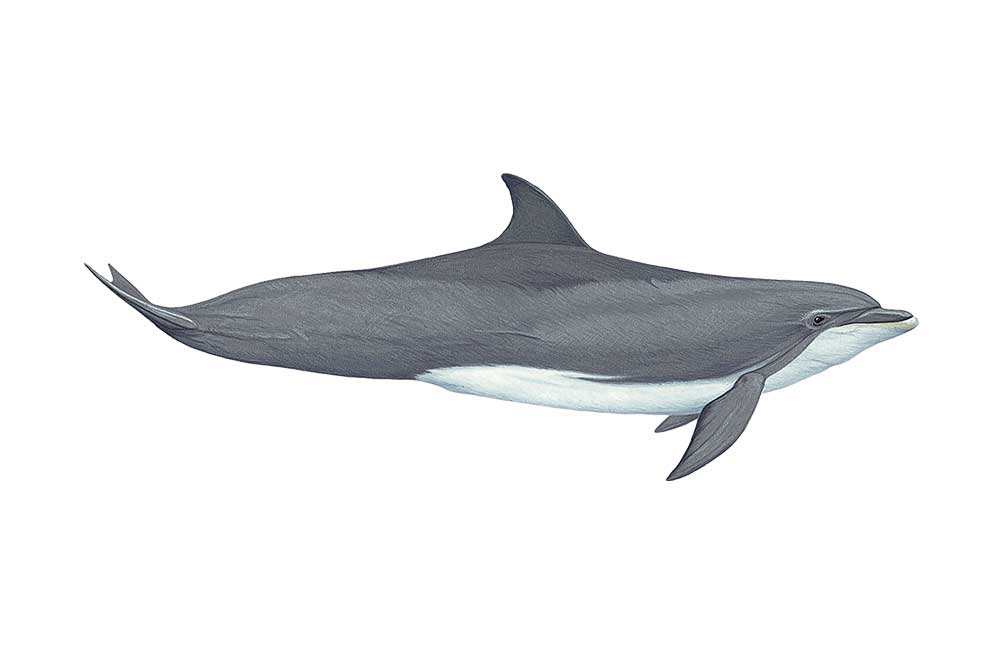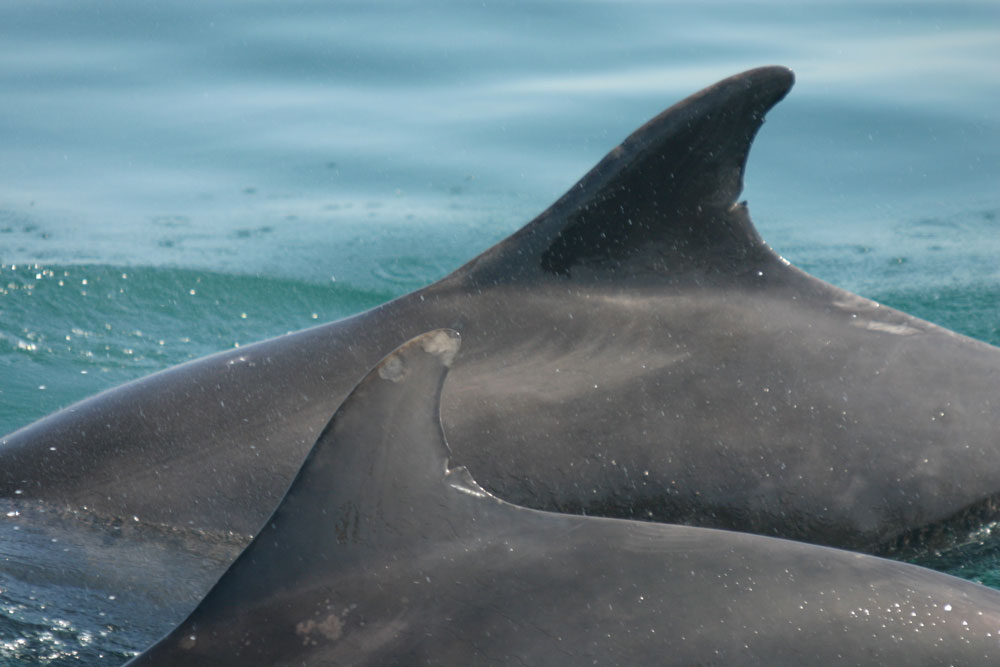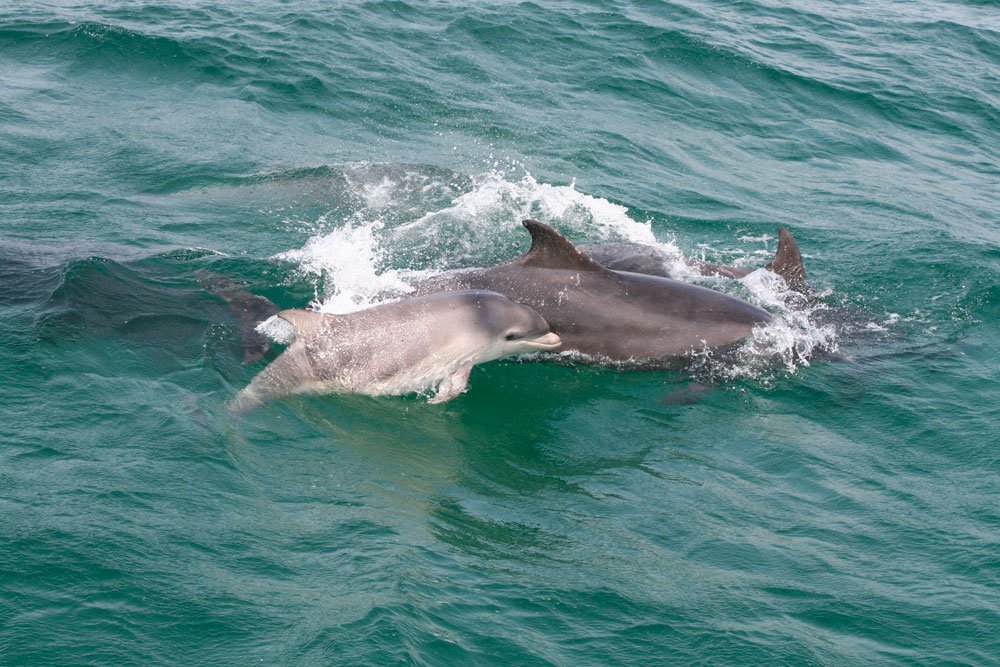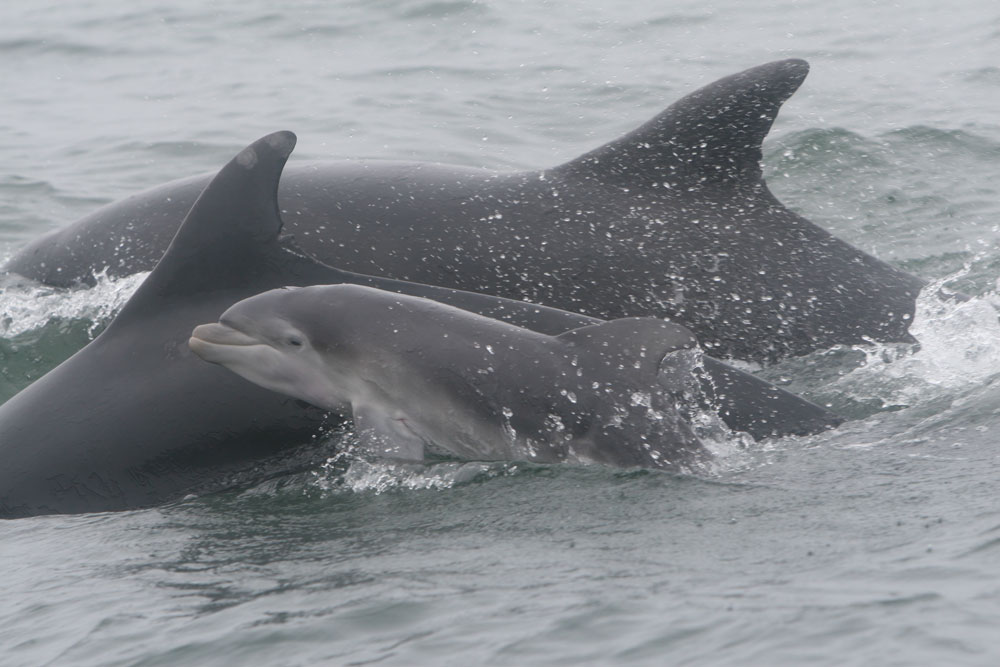
Latin: Tursiops truncatus
Gaelic: Muc-bhiorach
CETACEAN FACTFILE:
Months: January – December
Length: Up to 3.9 metres
Range: Temperate and tropical seas worldwide
Threats: Habitat degradation
Diet: Variety of fish, squid, cuttlefish and crustaceans
PHYSICAL DESCRIPTION
Scottish bottlenose dolphins are large, robust animals measuring up to 3.9 metres long and weighing around 400 kg when fully grown, which is somewhat larger than their counterparts worldwide. They typically have a dark grey back with light grey sides and a near-white underside. Older animals often have marks and scars inflicted by other animals, which often includes rake marks caused by other dolphins’ teeth.
BEHAVIOUR
Bottlenose dolphins are usually seen in social groups of three to ten animals, although larger group sizes are not uncommon. These dolphins are usually fairly slow swimmers, travelling at about 2 mph, but can reach speeds of over 30 mph for brief periods. Famously inquisitive, active and playful, they are often seen bow-riding, and leaping clear of the water.
HABITAT AND DISTRIBUTION
Hebridean bottlenose dolphins are at the northernmost extreme of the species' global range, and are seen throughout the area. They are most frequently seen in inshore waters, close to the coastline around headlands and bays. The best places to see them are around Mull (in particular the Sound of Mull), Iona, Coll, Tiree and Barra. Photo-identification by the Hebridean Whale and Dolphin Trust has found that there is a population of 30 to 40 animals inhabiting the Inner Hebrides (Kintyre to Skye) and a separate group of about 12 animals recorded in and around the Sound of Barra.
FOOD AND FORAGING
Co-operative feeding has been observed in bottlenose dolphins, where several dolphins work together to herd fish to the surface to feed. They have 18 to 26 pairs of conical teeth in each jaw, which are used to catch a wide variety of fish, squid, cuttlefish and crustaceans. Bottlenose dolphins are known to use their powerful tails to strike fish in order to stun and catch their prey, a behaviour known as ‘fish-whacking’.
STATUS AND CONSERVATION
Research by the Hebridean Whale and Dolphin Trust has identified around 50 bottlenose dolphins that inhabit the waters off the west coast of Scotland. Other notable UK populations include those in the Moray Firth (east coast of Scotland) and in Cardigan Bay (west Wales). The total UK inshore population of bottlenose dolphins is thought to be fewer than 300 individuals. Like most cetaceans, bottlenose dolphins are affected by human activities which includes accidental capture in fishing gear, the degradation of the marine habitat, the bioaccumulation of chemical contaminants and shipping activities, which may lead to injury from collisions and loud noises produced by seismic and military vessels may interfere with navigation, foraging and communication, as well as causing physical damage depending on the sound level.
Bottlenose Dolphin Hotspot Map






